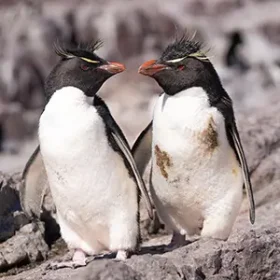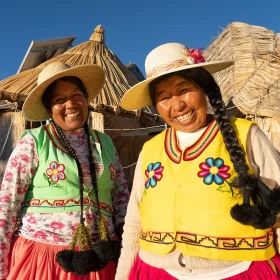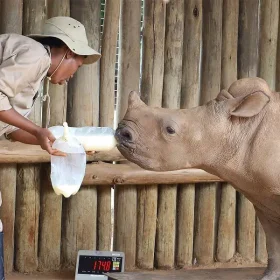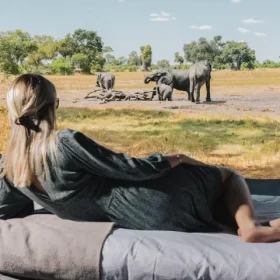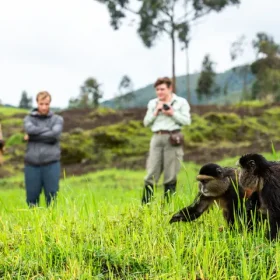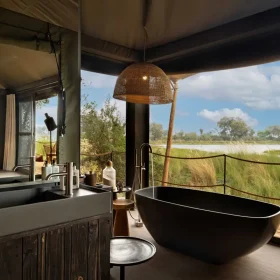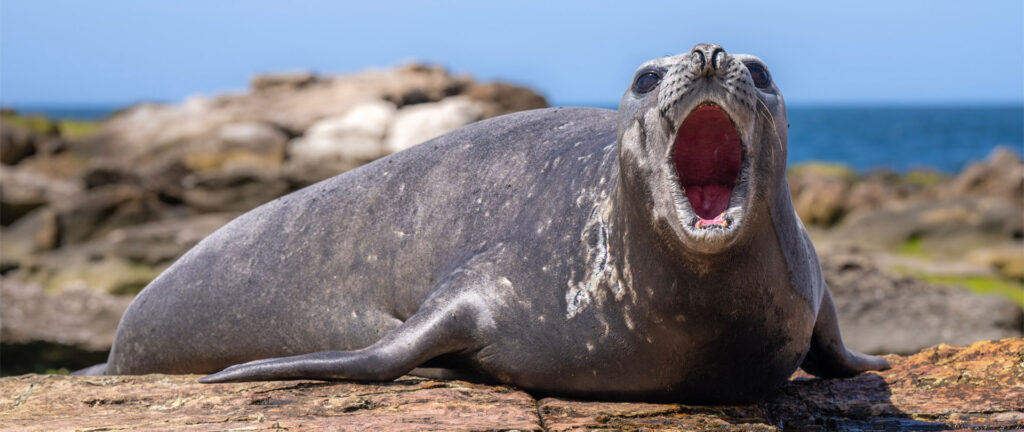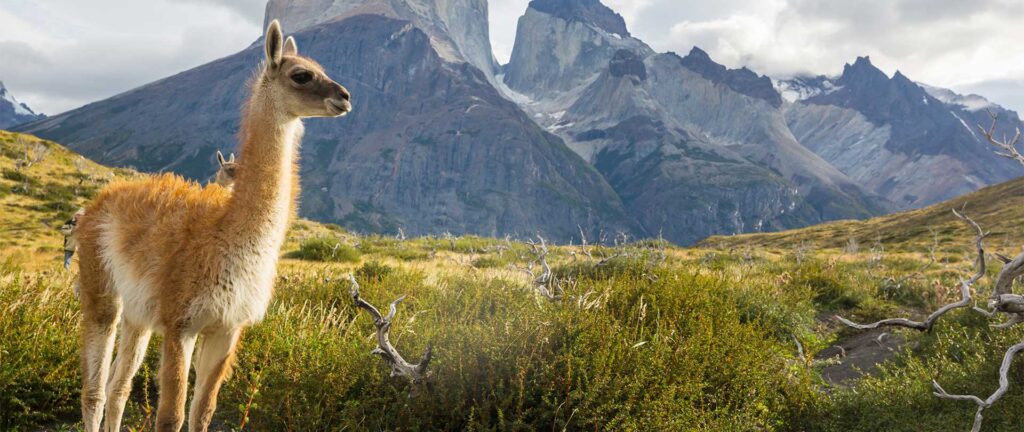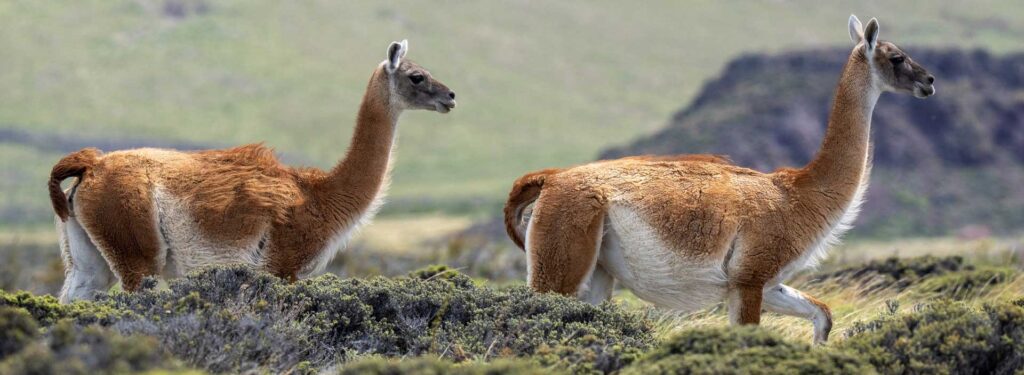Destinations
Patagonia
Where the wild meets the edge of the world.
Patagonia is a land of vast horizons and raw beauty, stretching from the jagged spires of the Andes to the wild, wind-battered Atlantic and Pacific coasts. In the mountains, glaciers spill into turquoise lakes, guanacos roam the golden steppes, and condors wheel high above snow-capped peaks. Along the coast, elephant seals haul out on lonely beaches, penguin colonies chatter in the salt air, and orcas hunt in icy fjords. This is a place where nature is unfiltered—grand, unpredictable, and endlessly inspiring.
Whether hiking in Torres del Paine, riding across a remote estancia, or watching southern right whales breach in the Valdés Peninsula, Patagonia invites travelers to move at nature’s pace. The air is crisp, the light changes by the hour, and every vista feels cinematic. In both Chile and Argentina, Patagonia rewards the curious with moments of deep stillness and unforgettable encounters, from the silence of a glacial valley to the wild chorus of seabirds on a rocky shore. It is a journey to the far edge of the world—where the elements rule and the wild still reigns.
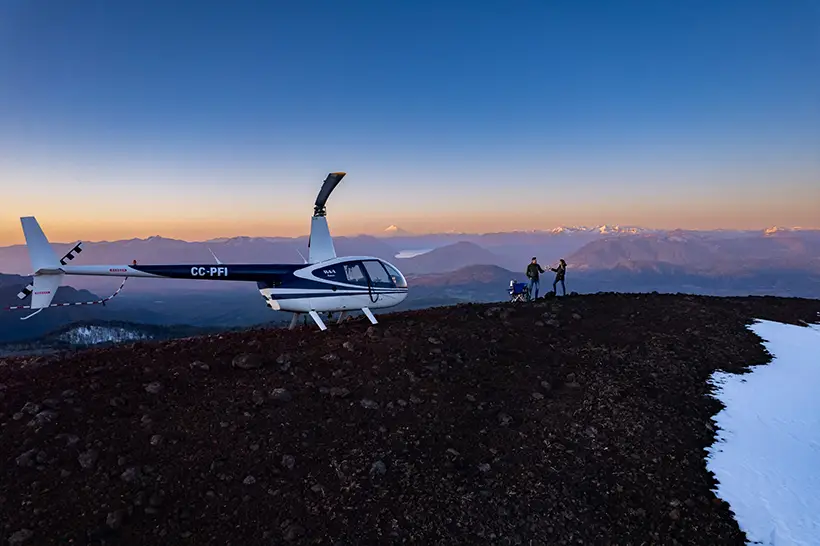
Best Times to Visit
October–November: Wildflowers blanket the steppe, wildlife is active after winter, and crowds are smaller.
December–February: The warmest and most popular months, ideal for hiking in Torres del Paine, exploring glaciers, and enjoying long daylight hours.
iconic wildlife
Pumas
Magellanic Penguins
Elephant Seals
Orcas
Andean Condors
How do you like your wild?
Let us create your dream Patagonia adventure
Reflecting On Flamingos
Laguna Chaxa, Chile
23° 19′ 41″ S / 68° 10′ 02″ W

– Gustave Flaubert
“Travel makes one modest. You see what a tiny place you occupy in the world.”
Between Two Countries, A Whole World
Torres del Paine National Park
Where the Wind shapes the World
Few places in the world offer such a high chance of seeing wild pumas as Torres del Paine. Set against the jagged spires and vast steppe of Chilean Patagonia, this national park has become a beacon for big cat conservation and respectful wildlife viewing. Accompanied by expert trackers and naturalists, travelers can spend hours following fresh prints, scanning hillsides, and—if luck allows—observing a puma in its natural rhythm.
Valdés Peninsula
Tides of Wonder
Each year, from September to March, Argentina’s Valdés Peninsula comes alive with the chatter and shuffle of tens of thousands of Magellanic penguins. Along windswept shores and under scrubby bushes, these tuxedoed seabirds return to the same nesting burrows year after year—offering travelers a front-row seat to a remarkable natural ritual. Offshore, the drama continues as orcas patrol the surf, using their rare and daring beaching technique to hunt seals and sea lions in the shallows—one of the most extraordinary predator behaviors on Earth.
Patagonia National Park
A Wild Rebirth
Patagonia National Park—once a network of sheep ranches—is now one of South America’s most ambitious rewilding projects. Spearheaded by Rewilding Chile, this sweeping landscape of grasslands, rivers, and peaks is being returned to its wild roots, one guanaco, puma, and wetland at a time.
Patagonian Steppes
Home of the World’s Largest Flying Birds
The sight of an Andean condor riding a thermal, wings spanning nearly 10 feet, is a defining image of Patagonia. These sacred scavengers play a vital ecological role—and have long captured the imagination of cultures from the Andes to the steppe.
Estancia Stays
Your Home Away from ... Everything
At the heart of Patagonia’s conservation story is an evolving relationship between people, livestock, and wildlife. Some estancias—traditional Patagonian ranches—are leading the way in this new model, where sheep grazing and wildlife conservation co-exist in delicate balance.
A journey isn’t complete without its defining moment.
Frequently Asked Questions About Patagonia
What’s the best way to explore Patagonia?
A mix of guided hikes, boat tours, and scenic drives offers the best experience, depending on your adventure level.
Do I need a visa to visit Argentina and Chile?
Most travelers from the U.S., Canada, and the EU do not need a visa for stays under 90 days.
How cold does it get in Patagonia?
Summers (Dec–Feb) range from 40–70°F (5–20°C), while winters can drop well below freezing in higher elevations.
What wildlife can I see in Patagonia?
Expect whales, guanacos, condors, pumas, penguins, and sea lions, depending on location and season.
How do I get to Patagonia?
Fly into El Calafate or Ushuaia for easy access to Los Glaciares and Tierra del Fuego, or drive the legendary Ruta 40 for a road trip of a lifetime.

